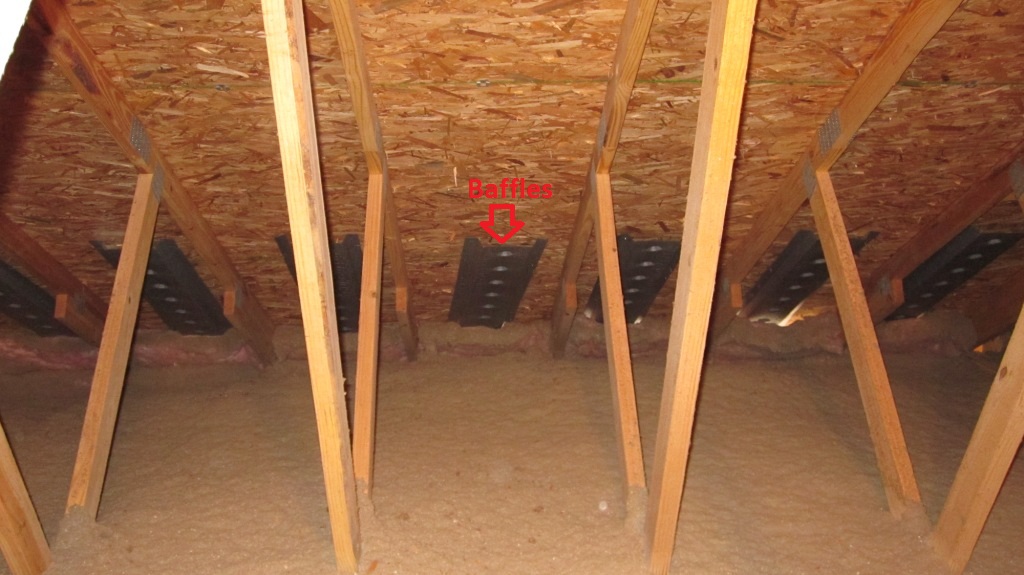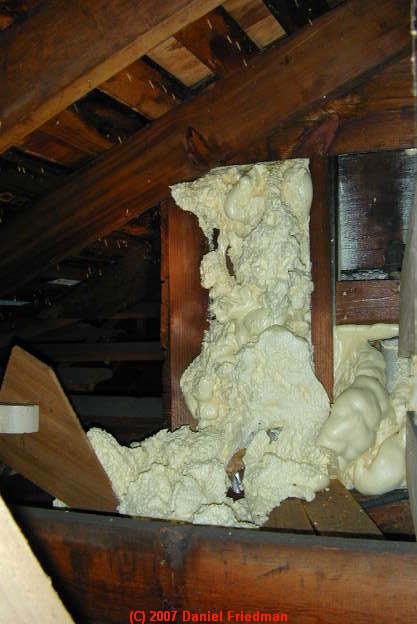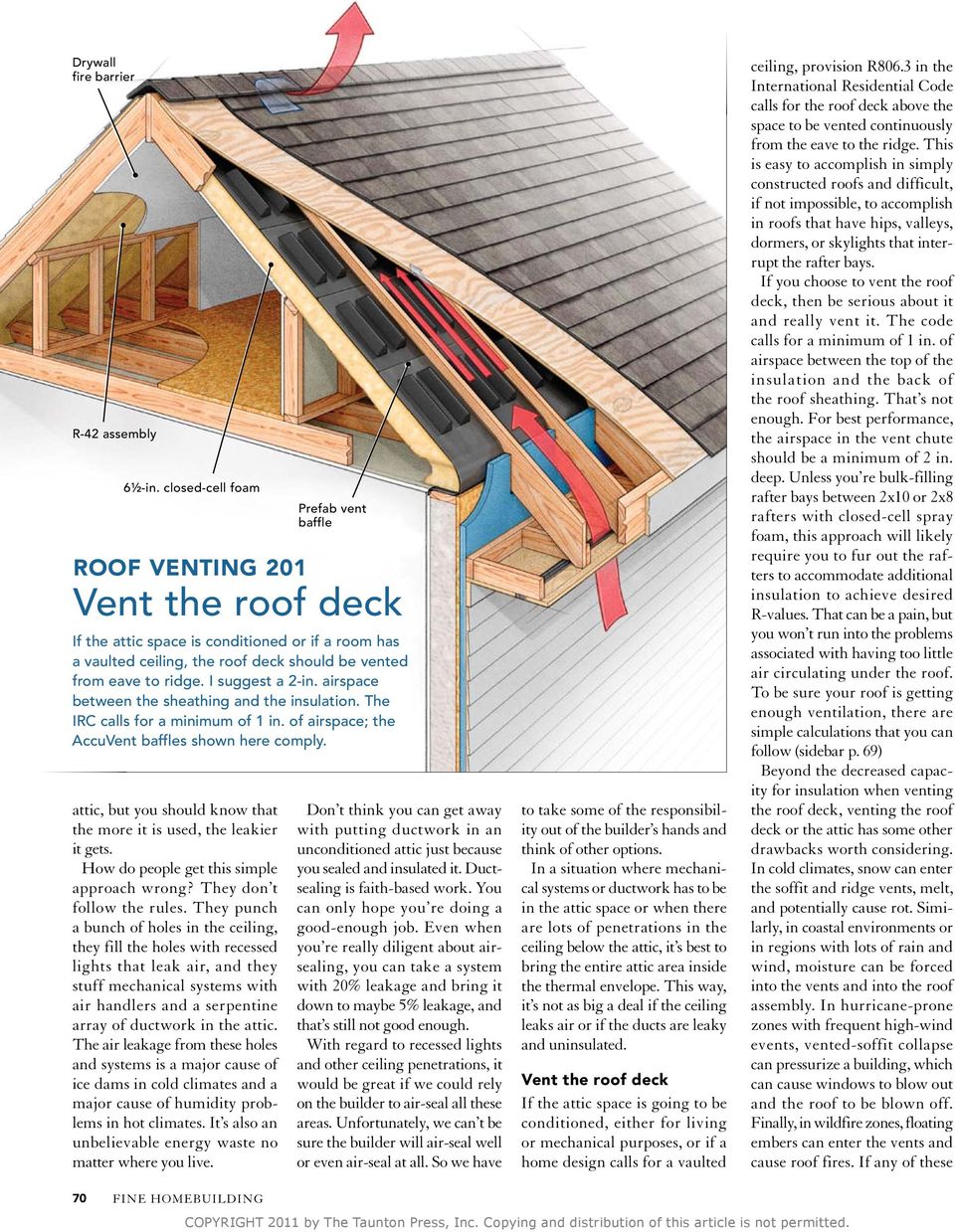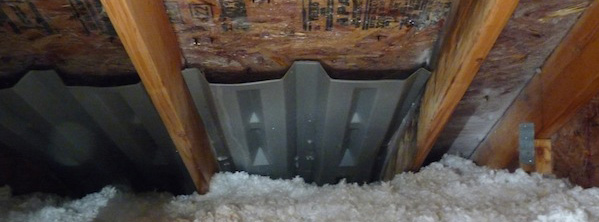This method also reduces the heat subject to attic mounted ac duct work thereby allowing them to work more efficiently.
Laying radiant heat barrier around soffit vent baffles in attic.
For really high roofs you should consider doing a flat top installation for radiant barrier for tall attics.
Radiant barriers are utilized to reduce summer heat gain in attics and help to improve the efficiency of green building envelopes.
Cut holes in the radiant barrier below all exhaust vents about 6 larger then the actual vent holes.
Radiant barrier should always be installed to work with the soffit and ridge vents.
They work 24 7 in the dark and are cheap compared to solar fans.
Plus once you install a radiant barrier so much heat is kept out of the attic ventilation is not as critical.
Installing radiant barrier under the roof decking is the preferred method versus on top of the insulation because it gives an air gap for the heat to escape to the ridge vent without creating a potential moisture problem between the radiant barrier and the attic floor.
Plus with a typical 8 mph wind they will pull a similar amount of air as the solar fan.
The first is stapling foil to the bottom of the roof rafters the second is laying it out over the existing attic ceiling insulation.
Installing radiant barrier under the roof decking is the preferred method versus on top of the insulation because it gives an air gap for the heat to escape to the ridge vent without creating a potential moisture problem between the radiant barrier and the attic floor.
Fit each one snuggly in the bay with the bottom starting where the ceiling joist meets the roof rafter.
It is important to create a pathway for cool air to come in the bottom of the attic and heated air to go out the top of the attic.
Just think of the air like water and it is draining out the top.
Attic area of 55 x 35 1925 sq ft x 1 3 for a medium pitch roof about 8 9ft high at peak 2 503 sq ft.
Radiantguard radiant barrier foil insulation installed in an attics can reduce attic temperatures by up to 30 degrees when stapled with a staple gun to the underside of roof rafters by reflecting up to 97 of the radiant heat that strikes its surface thereby reducing heat transfer from the attic to living spaces resulting in lower utility bills.
A radiant barrier can lower heat transfer from attics to the building below keep the attic space cooler and lower cooling costs by up to 17 in warmer climates.
Pull any existing insulation away from the edges of the attic where you will be putting up the baffles.
You will need a baffle for each space between the rafters.















































